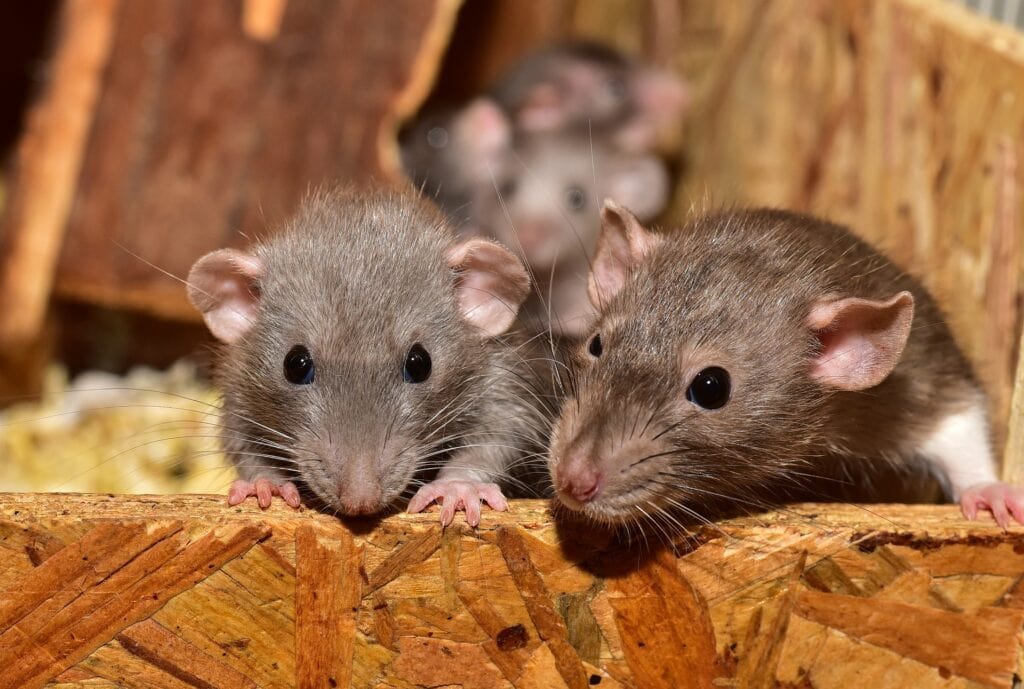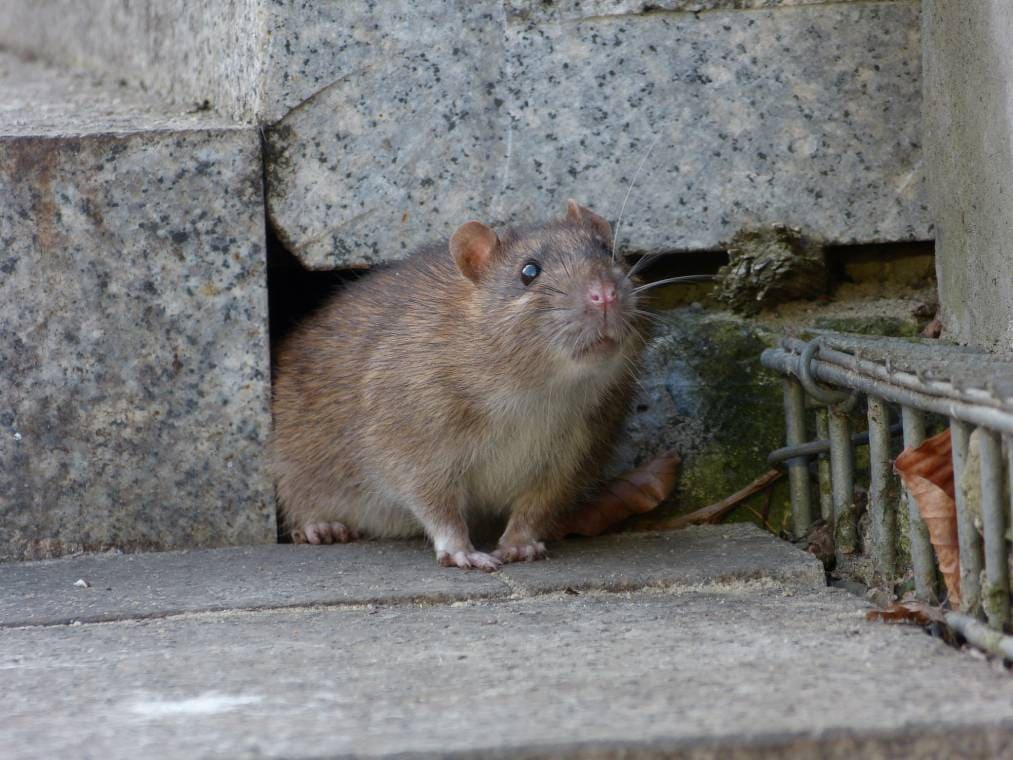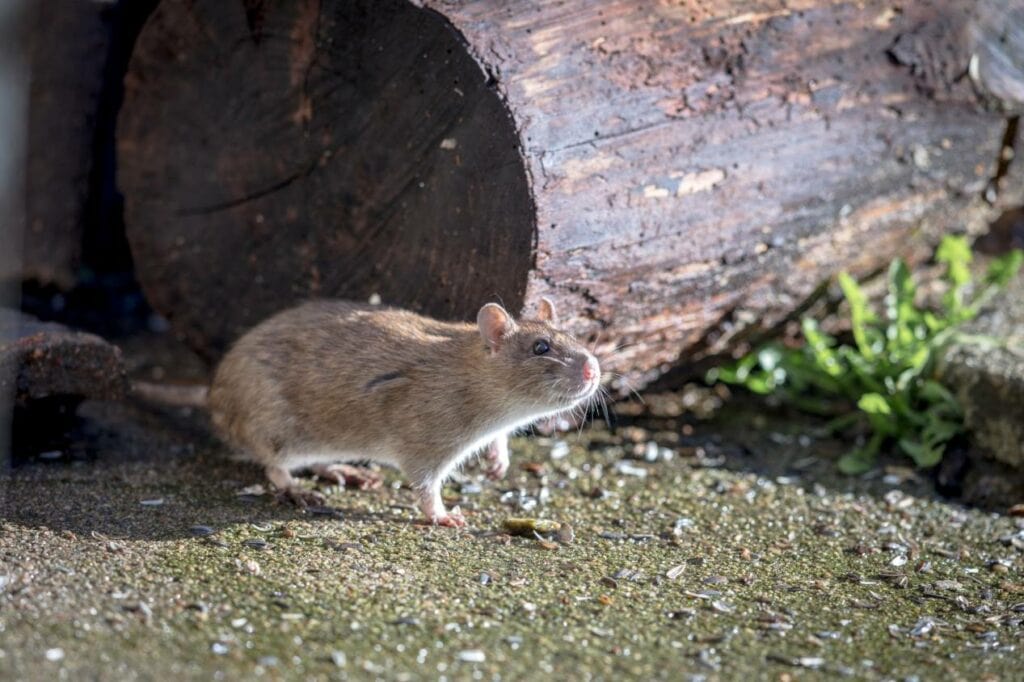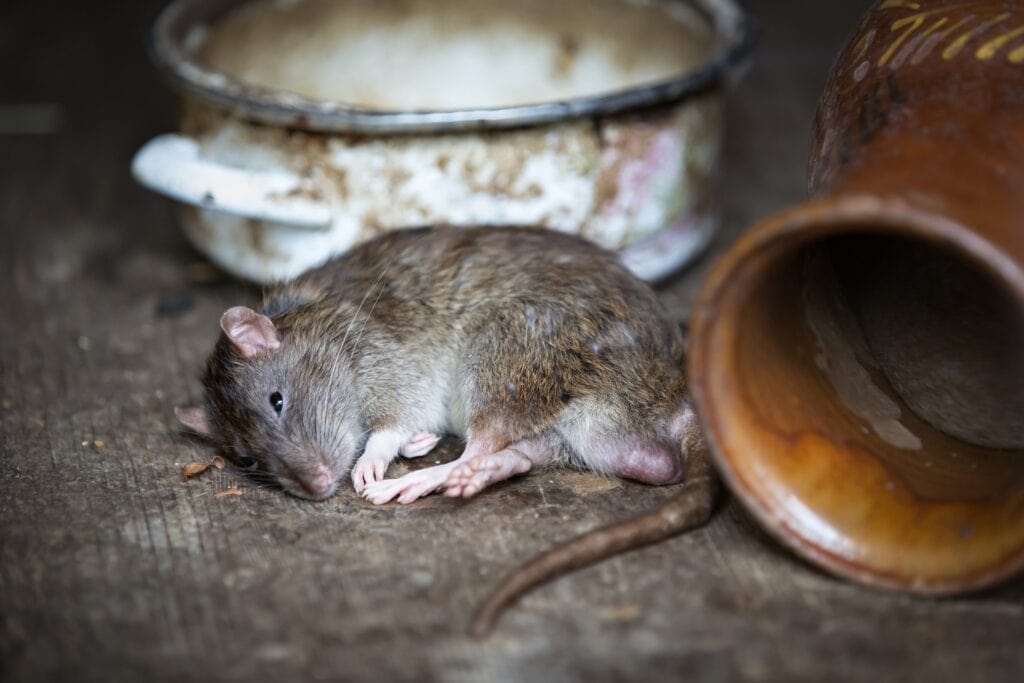Rats In Florida: Types, Facts, & Tips for Homeowners
-

- Last updated:

Rats are an extremely prevalent species of rodent that can be found almost anywhere on planet Earth. For many people, they represent something icky and terrifying. No one wants to see a rat, especially one inside their house. Finding a rat in their kitchen is the equivalent of some people’s worst nightmares. Unfortunately, it does happen from time to time.
Rats can be found in all 50 states in the United States, including the state of Florida. Florida’s strong maritime culture means that it has had a long relationship with rats dating back to the Age of Sail and beyond. Today, there are three species of rat that are commonly found in the state of Florida.
Here are the most common types of rats in Florida, some quick facts about rats to help you understand them better, as well as tips for keeping rats out of your house and how to get rid of them if you find them where they are not wanted.
The 3 Rat Species Found in Florida
1. Norway Rat

Norway rats, also called brown rats or common brown rats, are a species of rat found throughout Florida. It is not the most common species of rat in the state, but it can easily be found in populated areas. The Norway rat likes to live in areas where it can feed on leftover food and waste from humans. That means these rats are commonly found in and around sewers, by dumpsters, and around restaurants and landfills with a lot of food waste.
Norway rats are often brown or gray and are much larger than other types of rats found in Florida. Norway rats can grow to be 16 inches long or more. That is twice as large as the most common rat in Florida, the roof rat. Norway rats can also be identified by their droppings which are quite large and rounder than typical rat droppings. The tail of a Norway rat is generally shorter than its body.
2. Roof Rat

The roof rat is the most common type of rat in Florida. The roof rat is considerably smaller than the Norway rat growing to just 8-9 inches in length rather than 16 inches or longer. In Florida, these common rodents have also been called the citrus rat or fruit rat because of their prevalence in citrus groves and old packing plants. Unlike the brown Norway rat, roof rats are blacker. Roof rats are much darker than the other species of rat commonly found in the state of Florida.
Roof rats can live for a comparably long time compared to other rats. Females can live up to three years and can produce multiple litters of 20 or more pups in their lifetime. That means you want to get rid of roof rats as soon as you find them around your house to avoid a large infestation from taking root.
Roof rats have very long tails, especially compared to Norway rats. They also have elongated droppings with pointed ends, which are fairly easy to spot and identify.
3. Wood Rat

Wood rats are the least common species of rat in Florida. This type of rat is largely found in the northern regions of the state, including the Florida-Georgia border and the panhandle. Wood rats are typically brown and grow between 12 and 16 inches in length. Wood rats are voracious chewers and can cause a lot of damage to a home. Unlike Norway rats and roof rats, wood rats chew a lot more and are more likely to cause damage to vital items inside a house.
Wood rats are also known for stealing small items, including shiny objects like wedding rings, buttons, and coins. They take these small items away with them to their nests which are usually out of sight and nearly impossible to locate after the fact.
Compared to other common rats, wood rats have long soft fur and fuzzy tails. Their fur and tail composition make them easy to identify compared to other rat species if you know what you are looking for. Wood rats are rarely found in the southern or central parts of the state.
- Genus: Rattus
- Length: 6 – 12 inches
- Weight: 6 – 16 oz
- Species: 56+ worldwide
- Lifespan: 1-2 years
- Litter size: 6-20 pups
- Range: North America, South America, Australia, Asia, Europe, Africa, and on various islands and oceangoing vessels
- Rats are differentiated from mice largely by their size.
- Rats are excellent swimmers.
- Rats have very poor eyesight.
- But they do have an excellent memory.
- Rats are very social creatures.
- Rats’ teeth never stop growing, which causes them to chew constantly.
- Rats can chew through almost anything, including concrete, wood, plastic, and aluminum.
- Rats have visited every continent on Earth and are carried around the globe by human activities.
- Rats cause billions of dollars in damage to agricultural activities every year around the globe.
How to Prevent Rats from Getting Into Your Home
In order to head off any issues with rats, one of the first things you should do is try and prevent them from entering your home in the first place. Rats will enter a home through small spaces or holes in your home’s walls, floors, or foundations. Some rats like to burrow and come up through the crawl space, while other rats will drop down from nearby trees and climb into your attic and windows. Keeping your house completely sealed is one of the easiest ways to prevent intrusions from rats.
Keep windows and doors tightly sealed. Locate and repair any holes in your drywall, garage, or flooring that could let in rats from the outside. Make sure your attic is sealed and that there are no gaps in your attic access or holes in your vents or ducts. If rats cannot find a good way to enter your home, they will likely stay away.
Also, keep food and brush down. Do not leave food out overnight, and do not drop food around your exterior trash can. Don’t let brush grow up around your house or let trees droop down and touch your roof.
Another thing you can try is getting a cat. Cats were bred, in part, to help keep rat populations at bay. They have lived alongside humans in a rat-eliminating capacity for many hundreds of years. Cats can still help prevent rats today just by their presence. Bonus points if they are indoor-outdoor cats.

How to Get Rid of Rats Inside Your Home
Trapping
One of the simplest and most widespread methods for getting rid of rats is to trap them. There are various different types of traps, including live traps, glue traps, snap traps, and baited traps. There are box traps and flat traps, large traps and small traps, specialized traps, and basic traps.
There are different traps for different situations, conditions, and spaces. Some traps focus on keeping the rats alive so you can simply move them to a different location. Some traps are designed to injure or kill the rats making it easier to remove them and keep them away.
Rat traps are widespread, easy to find, easy to use, and cheap to afford. That makes them an ideal first choice for tackling a minor rat problem inside your home.
Elimination
Another method to get rid of rats inside your home is to eliminate them. There are various methods of elimination, including lethal traps, poisons, and even gas. Unlike trapping, elimination’s main focus is on killing the nearby rat population. Elimination can be risky since the methods used, especially rat poison, can be extremely dangerous to people, children, and pets. Elimination ought only to be done with extreme caution or under the supervision of an experienced participant or professional.
The benefit of elimination is that the problem is wiped out at the source. Dead rats can’t reproduce, and they can’t find their way back into your home. However there are risks involved with killing rats with certain products.
Professional Help
At the end of the day, if you are not comfortable eliminating rats from your house on your own or find yourself unable to finish the job, there is no shame in calling in a professional. In fact, when it comes to rats, professional help might be exactly what you need. Professionals are specially trained and equipped to deal with rat infestations, and they have the knowledge, equipment, and experience that most regular homeowners simply don’t have. The result is that they will be able to assess the scope of the threat and advise you on the best course of action in ways that inexperienced people simply can’t.

Biggest Rat Threats
Rats can bring some serious threats to your home and family. These threats include damage, illness, and waste. Rats can be extremely destructive if they burrow into the innards of your house. Rats can chew through pipes, electrical wiring, insulation, drywall, and even studs. One of the biggest threats from rats is the damage they can cause to unseen areas of your home. Finding wiring chewed by rats can be extremely difficult and expensive. Damage from rats is usually located between your walls and in your crawl space, areas that you normally do not frequent.
Rats can also spread disease and nastiness throughout your home. Rat and mouse urine has a potent smell that can be extremely difficult to remove. Urine and droppings can make a house dirty, cause unpleasant odors and appear seemingly at random. Rat waste can also potentially stain carpet, flooring, paint, and drywall. Living among rat waste can cause people to get sick. Rats can also inflame people’s allergies and respiratory issues. For all of these reasons, it is best to eliminate rats as soon as they appear to prevent further damage to your health and home.
Conclusion
Rats are a common pest that has been an irritant to humanity for centuries. Modern-day Florida is no exception. Rats can be a big problem, and it is best to try and deal with them as quickly as possible if you suspect they are inside your house. Luckily, in Florida, there are fewer numbers of basements, attics, and crawl spaces for rats to enter compared to the rest of the United States. Stay on guard and be on the lookout for rats and rat-associated issues.
- Related Read: Rats in Indiana: Types, Facts, and Tips for Homeowners
Featured Image Credit: Silvia, Pixabay
Contents

